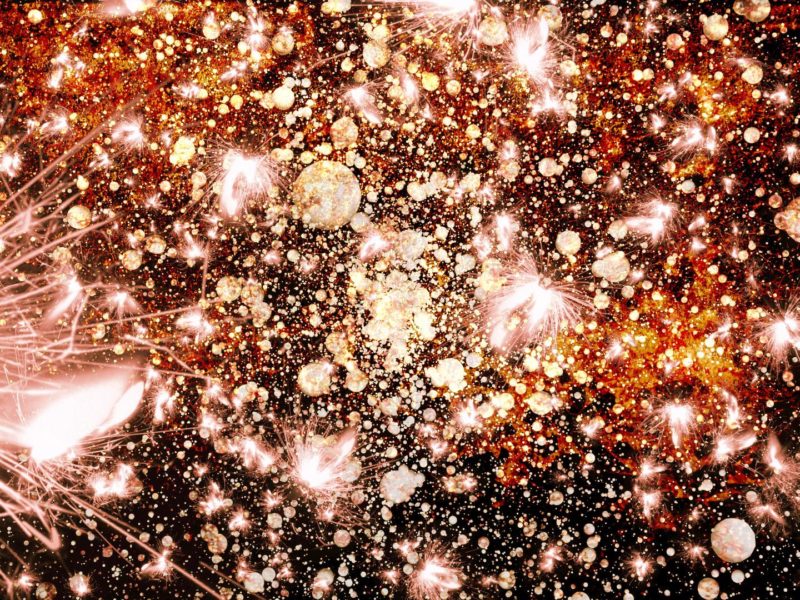Movements Arising from Different Relationships
This is the second movie in the series, following on from the previous work, ‘Between Regularity and Irregularity’. As with the previous movie, this work continues to focus on the following phenomenon that occurs in the space between regularity and irregularity: 1. Fluctuation in the timing of sound 2. Change in tone quality (change which arises as a result of noise from resistive elements and other factors during noise generation) 3. Movement of particles and lines 4. Shape and form. This time round, with regard to point 3 above, this movie also utilizes the di erent movements caused by di erent relationships between minute units such as structures and cells in living organism, as well as particles and lines in non-living matter to explore further feelings of pleasantness through the expression of these di erences in addition to combining di erent types of movement. We have not reached the point to describe the distinctions or de nitions of a biotic component and an abiotic element yet for the present; however, I sense that humans are slightly sensitive to the kind of movements that is characteristic of biotic components. Therefore, I not only used abiotic and biotic movements individually or combined, but also instantly switched from abiotic movements to biotic movements. For the biotic movement, mice expressing uorescent proteins in their neural tissue were used, and the neural tissue in their brains was made transparent using «Sca/e» technology developed by the Laboratory for Cell Function Dynamics, RIKEN Brain Science Institute. The movie uses footage of the neural tissue that had been xed and lmed every few micrometers along the z-axis. Although this brain is immobilized and is not actually moving, relationships between structures unique to living organisms are born during the growth phase, and as with changes on the time axis, relationships and complexity are etched into the brain in its space in arrangement and ties. For the abiotic movement, the movement of uids and particles in uids as well as the movement of particles, lines and images as replicated through programs which depict self- similarity or other aspects were used. There are cases where one can see relationships between particles and lines, either due to connections pertaining to the substances or due to the program, but there are also cases where there is no direct relationship, even though self-similarity is depicted through a program.
Masahiro Tsutani
